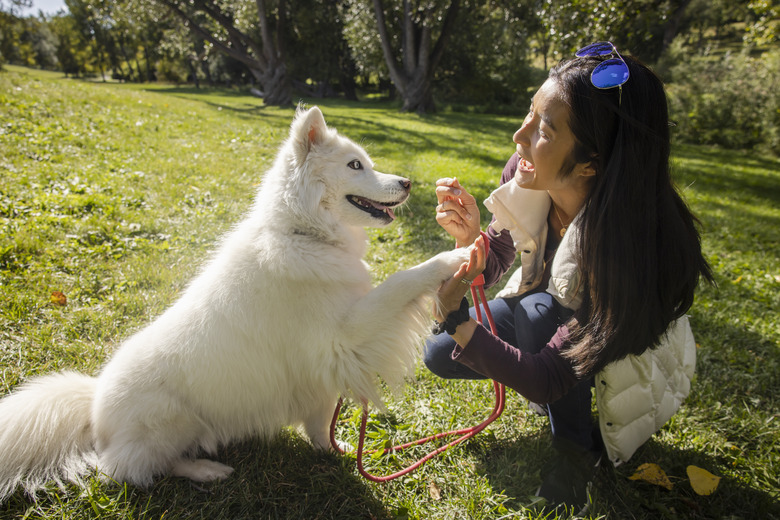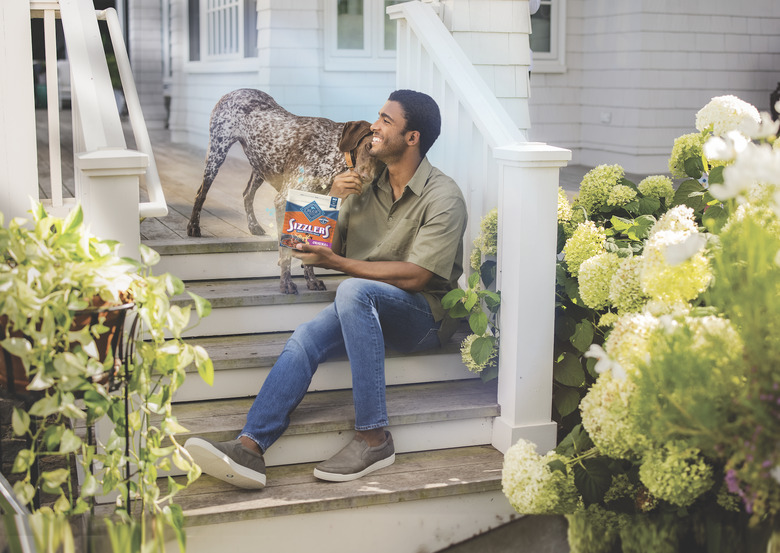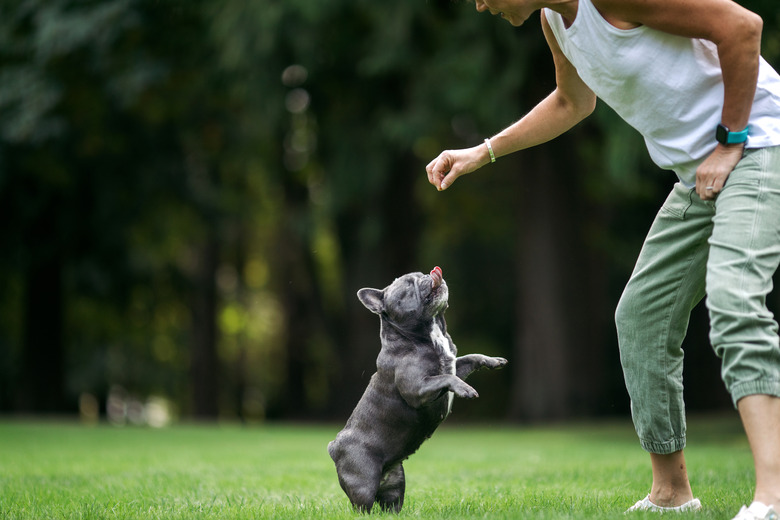To Treat Or Not To Treat? How Experts Navigate Pet Snacking
Determining the appropriate time to give your pet treats may seem easy. That is, of course, until you realize you want to reward them for just about everything (they're so cute, you can't help it!).
We understand the temptation to keep the treats coming, but there are a few things you'll want to keep in mind about how they can be used to shape your pet's behavior.
"To put it simply, reinforcement drives behavior," says co-founder of Clickstart Dog Training Academy Liv Healy, CBCC-KA, FFCP. "The more we proactively reward behaviors we like, the more our pets will offer those behaviors for us, and the less they will perform unwanted ones."
As a certified behavior consultant, Healy has seen firsthand what a difference treats a pet really loves can make when it comes to training. A fan favorite among pups? Blue Buffalo, which makes treats with no artificial flavors or preservatives, so you can feel good about giving them to your pet — as often as your veterinarian feels it's appropriate. Keep reading for Healy's guidelines to consider.
3 instances when you should treat
1. To help with socialization
When you first bring a pet home, they can be nervous being around strangers and new places. Even as they grow up, being in new environments can sometimes be challenging for more anxious pets.
Healy's advice? Use treats to help your pet feel more comfortable when introducing them to new situations. "During puppy or kittenhood, treats can be used to aid in socialization by forming positive associations with new people, environments, and things," Healy says.
2. During training
If you (or your new pet) are nervous about training, stock up on treats. Using treats as rewards during training can be a fantastic way to build positive associations with the training process, Healy says.
"When training, it is important to find something that will motivate your pet to enthusiastically work with you," they say. "The right type ... of treat can be an extremely powerful way to reward good behavior, [refine] skills, and even work through problems."
3. For "no reason"
Giving your dog a treat for no reason can actually be a great idea, as long as it's in moderation, Healy says. Think of it as an extra way to bond with your pet. Plus, it can help to build up their positive association with you.
"Humans use food to bond and celebrate all the time, and it's okay to share those experiences with our pets," Healy says. Additionally, treating with Blue Buffalo treats has the added benefit of making you feel good, too, since you can feel confident you're giving your furry BFF natural ingredients, vitamins, and minerals.
So next time you're celebrating a special day or treating yourself, include your pet by giving them a treat. Just make sure you're not giving your pet so many treats that they become a large percentage of your pet's diet, Healy adds.
When not treating is the right move
When not treating is the right move
Healy says there isn't an overarching scenario where not treating your pet is appropriate. It may be helpful to keep in mind that treating your pet should reinforce their positive behavior or associations, but beyond that, it varies depending on the specific pet or situation.
If you are struggling with the nuances of when to treat your pet, Healy recommends discussing this with your veterinarian, a qualified (and certified) professional trainer, or a behavior consultant.
Common misconceptions about treating
Common misconceptions about treating
Healy wants to push back against the idea that treating your pet is comparable to bribing them. "When we train using treats, what we are actually doing is building up a robust history of reinforcement," they say. "The stronger that history is, the more reliable the behavior associated with it."
Another common misbelief is that treating cannot help work through more serious pet behavior concerns, such as anxiety or aggression, Healy says. On the contrary, using positive reinforcement — like treating and offering praise — has proven to be highly effective. It also does not have the same risks of negative consequences that can accompany aversive training strategies.
The bottom line
The bottom line
When you consider how and when to treat your beloved pet, these expert tips — along with advice from your vet — can help guide you in your treating journey.
"Treats are a wonderful way to build strong positive associations with you, with the training process, and with anything else in the world we want our pets feeling comfortable with," Healy says.
So, next time you want to give your pet a treat just for looking cute, go ahead and give them one. They definitely deserve it.
Looking for new treats for your dog or cat to try? Check out Blue Buffalo's wide variety of naturally delicious flavors, so you can find their new favorite snack.


